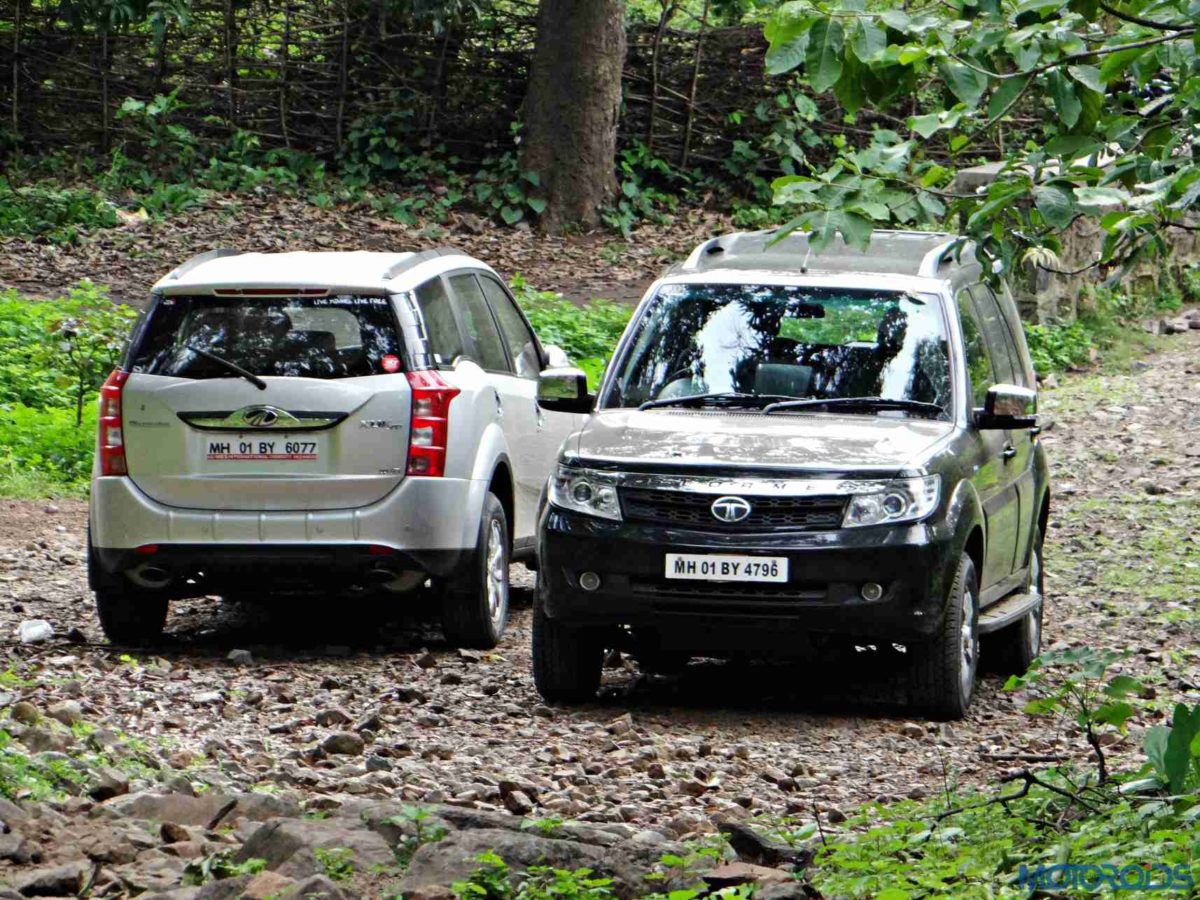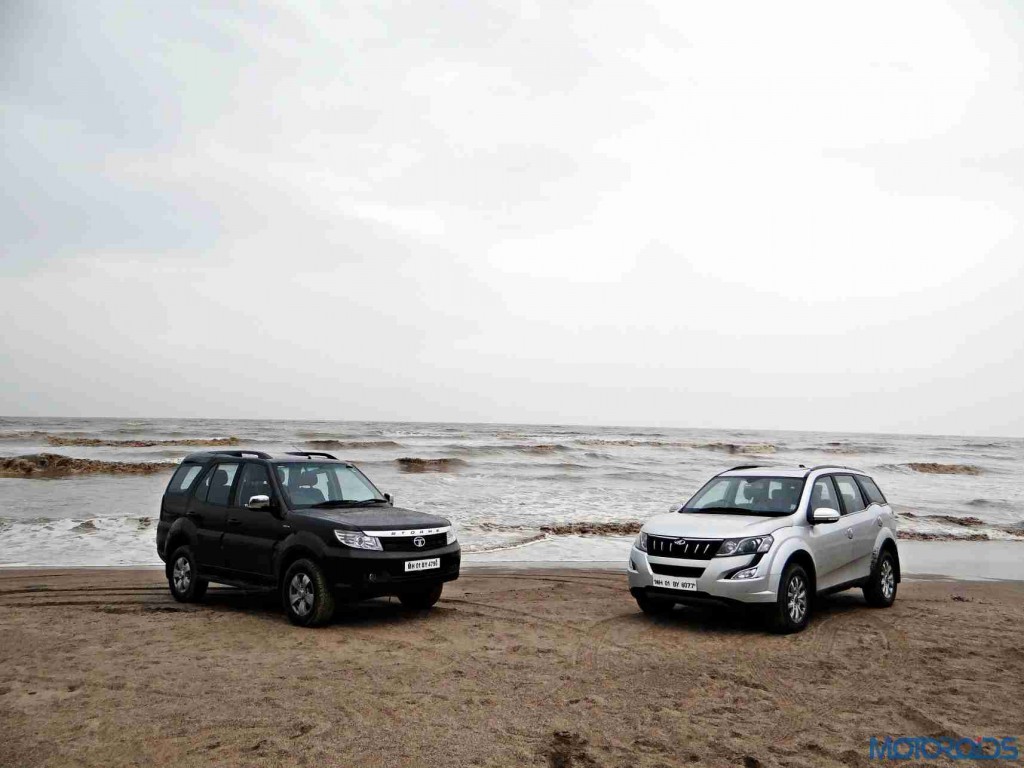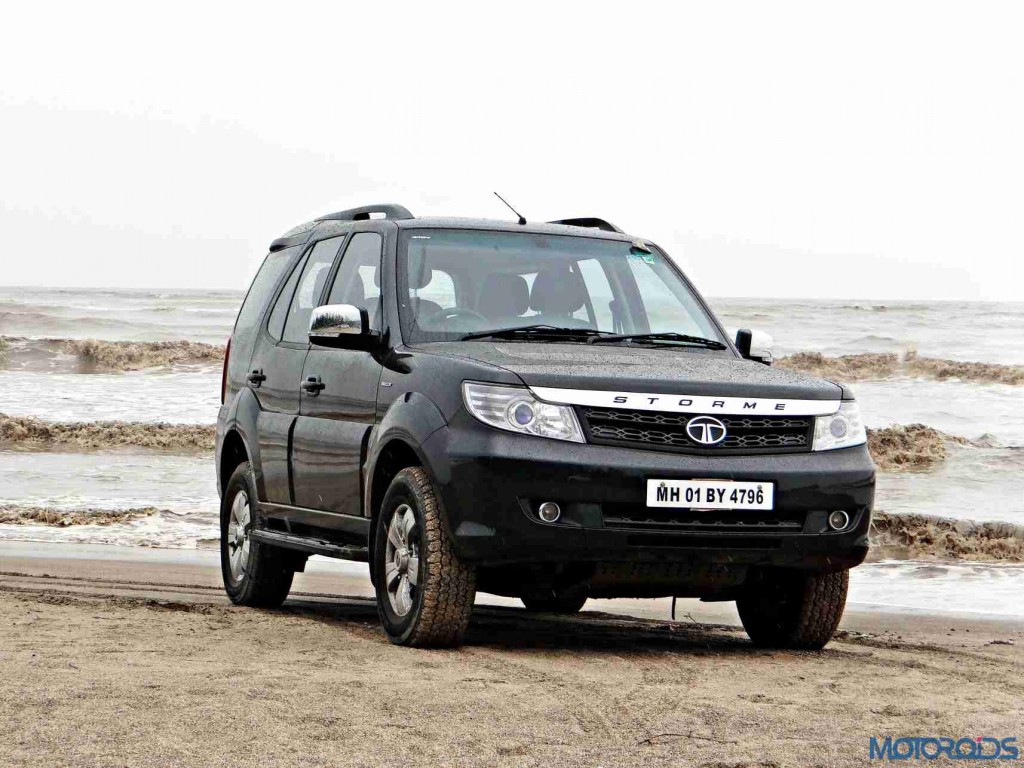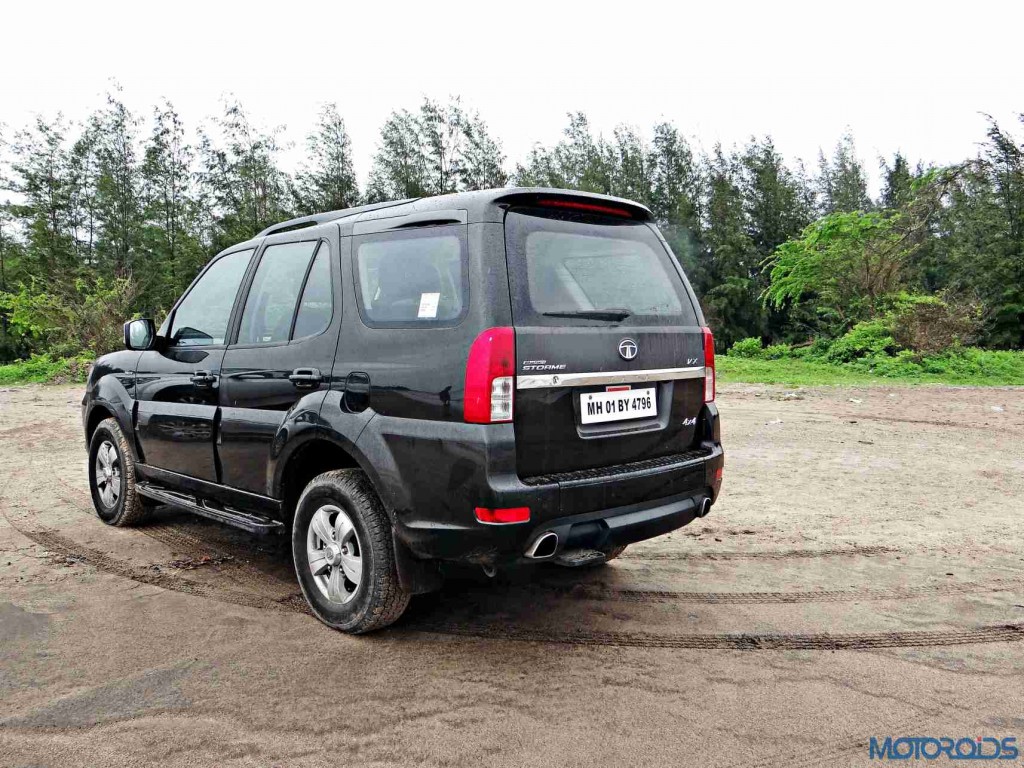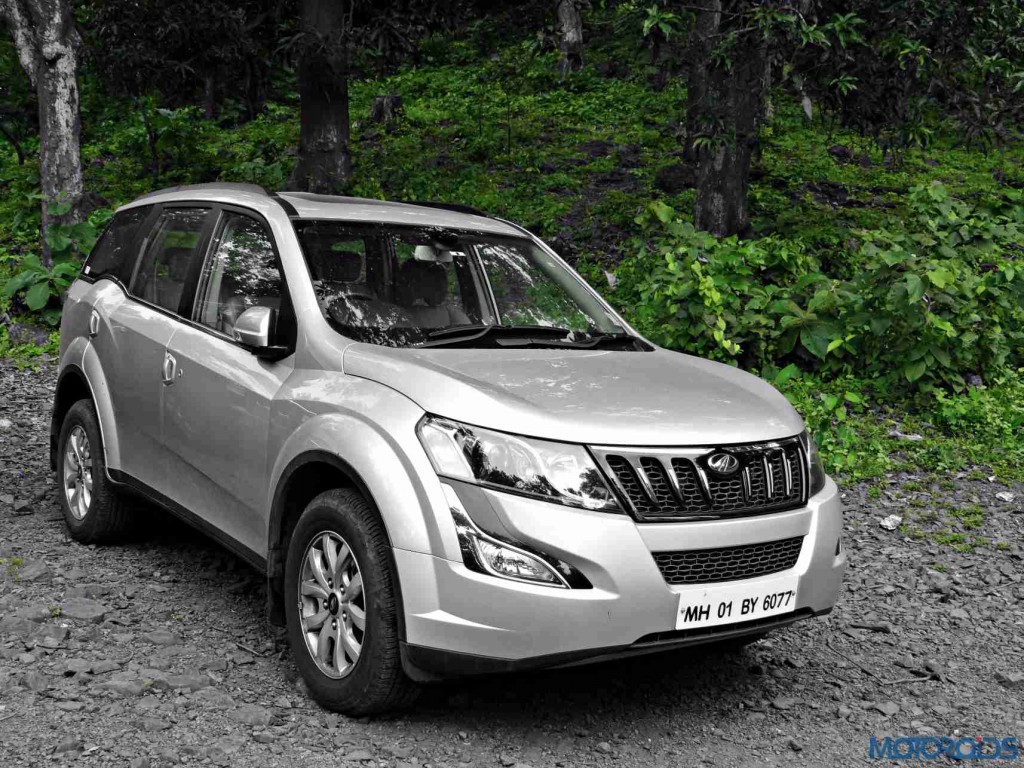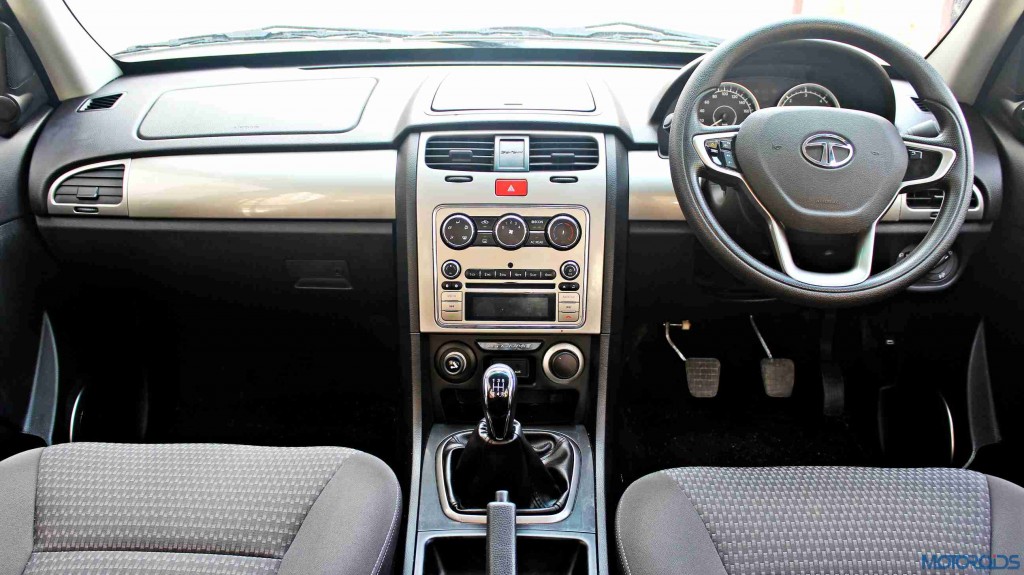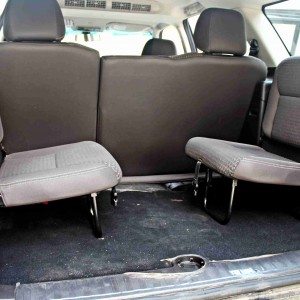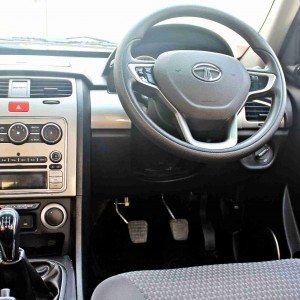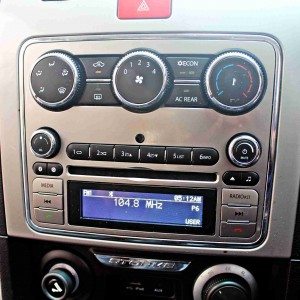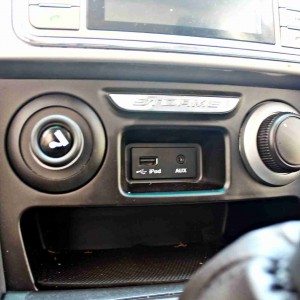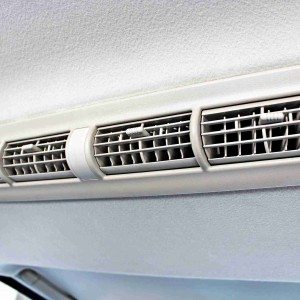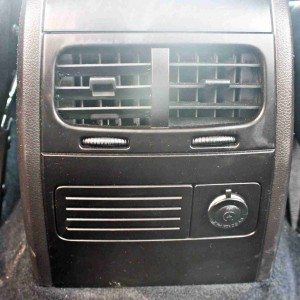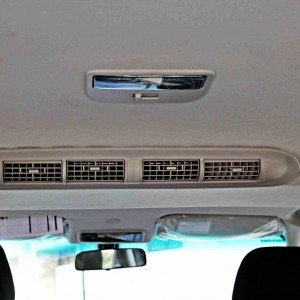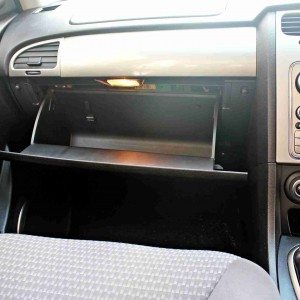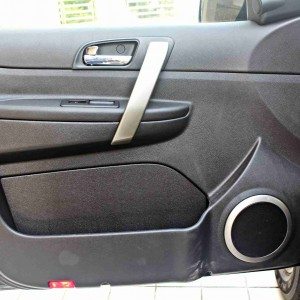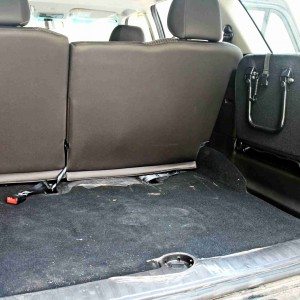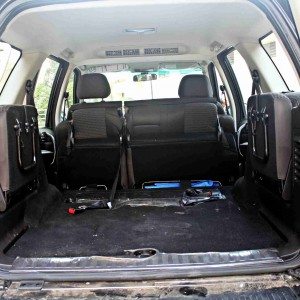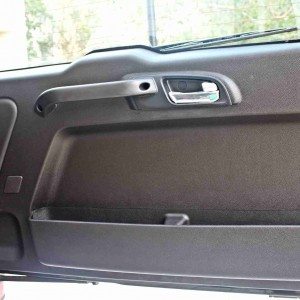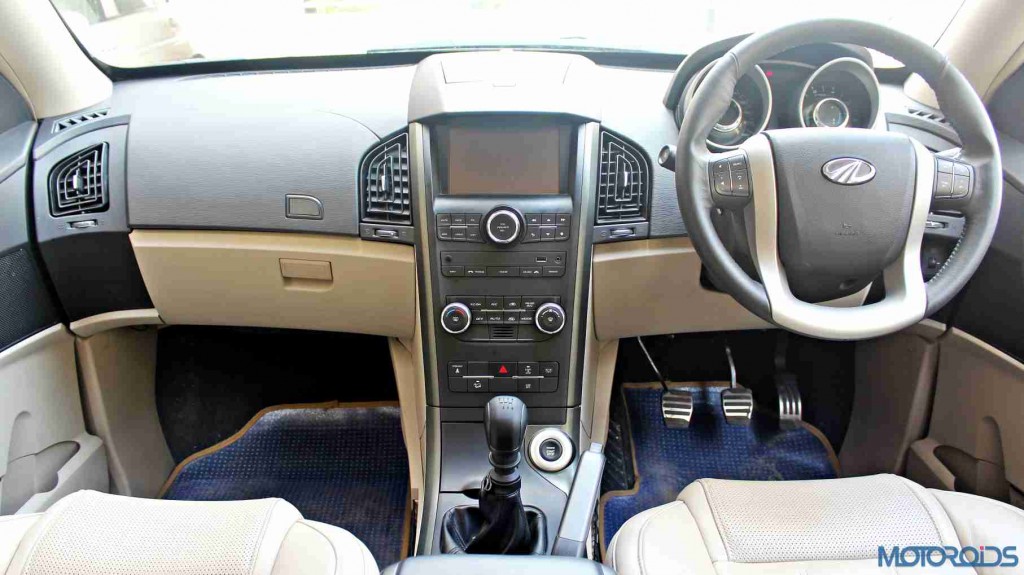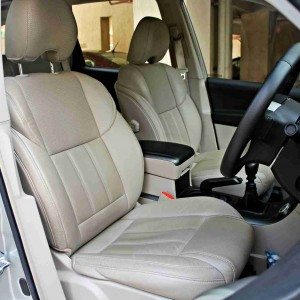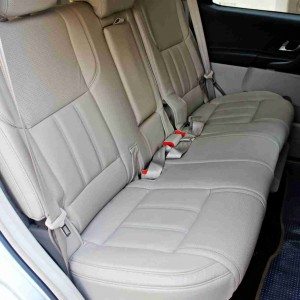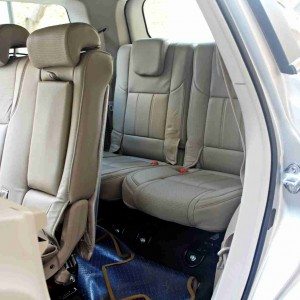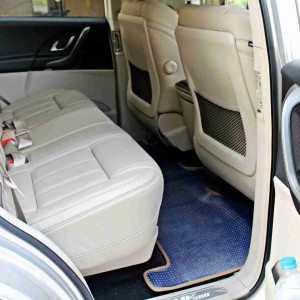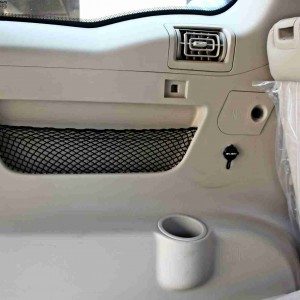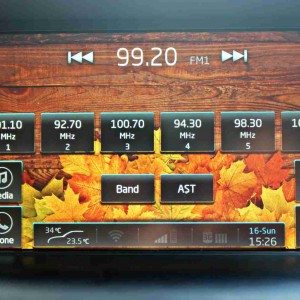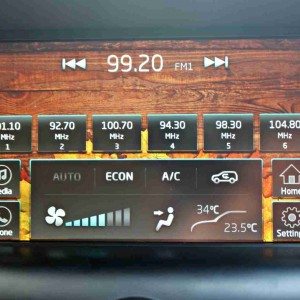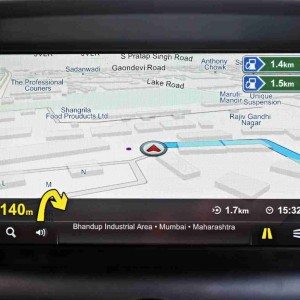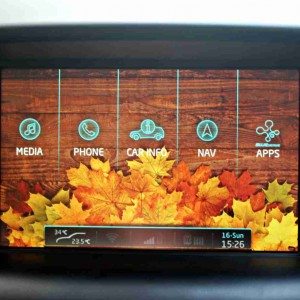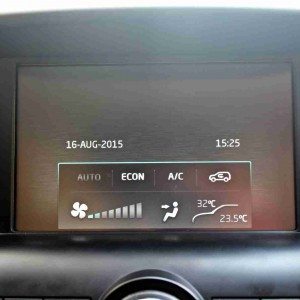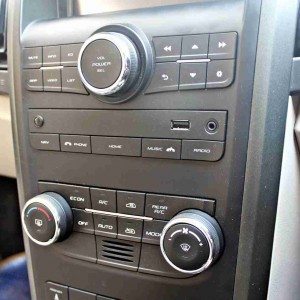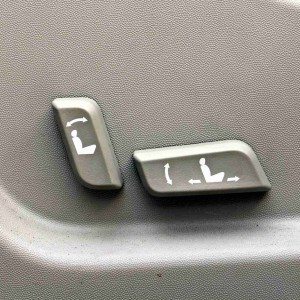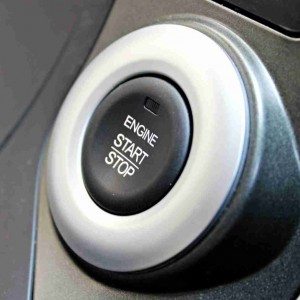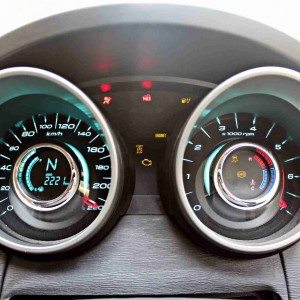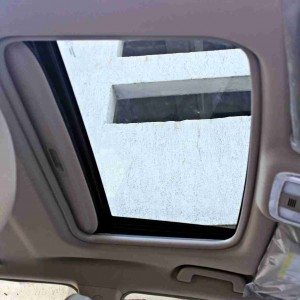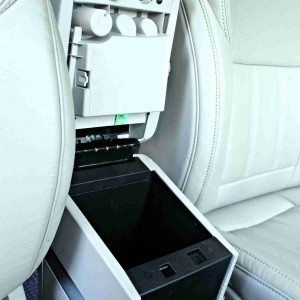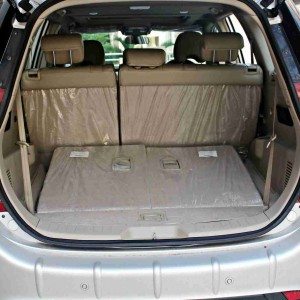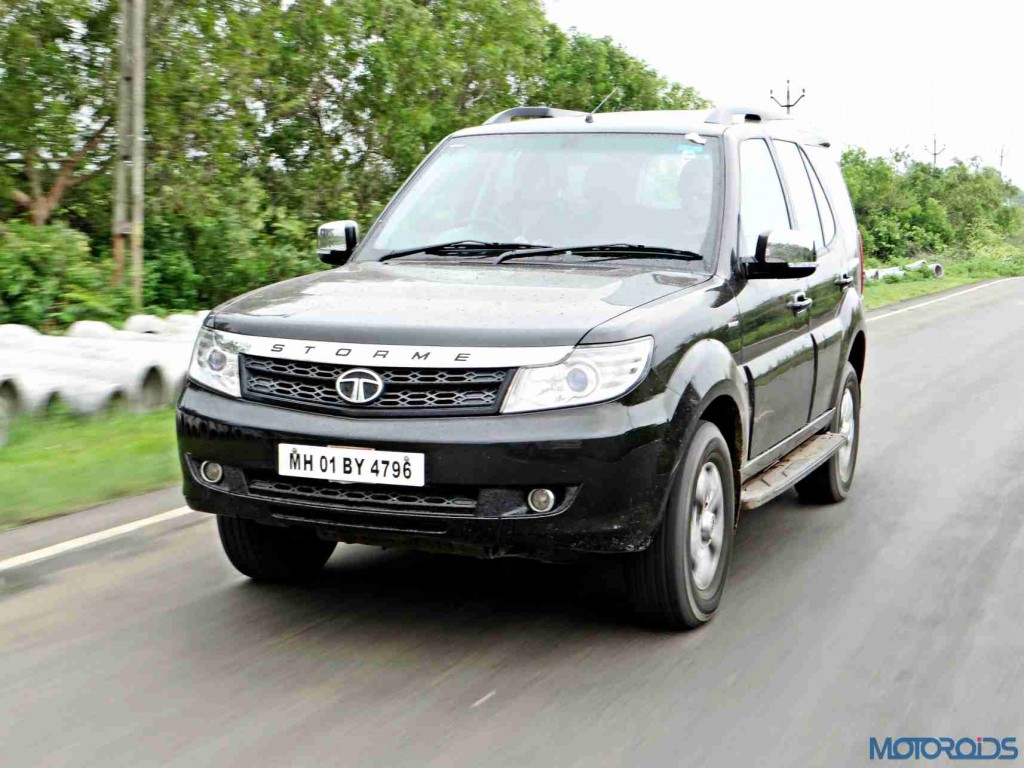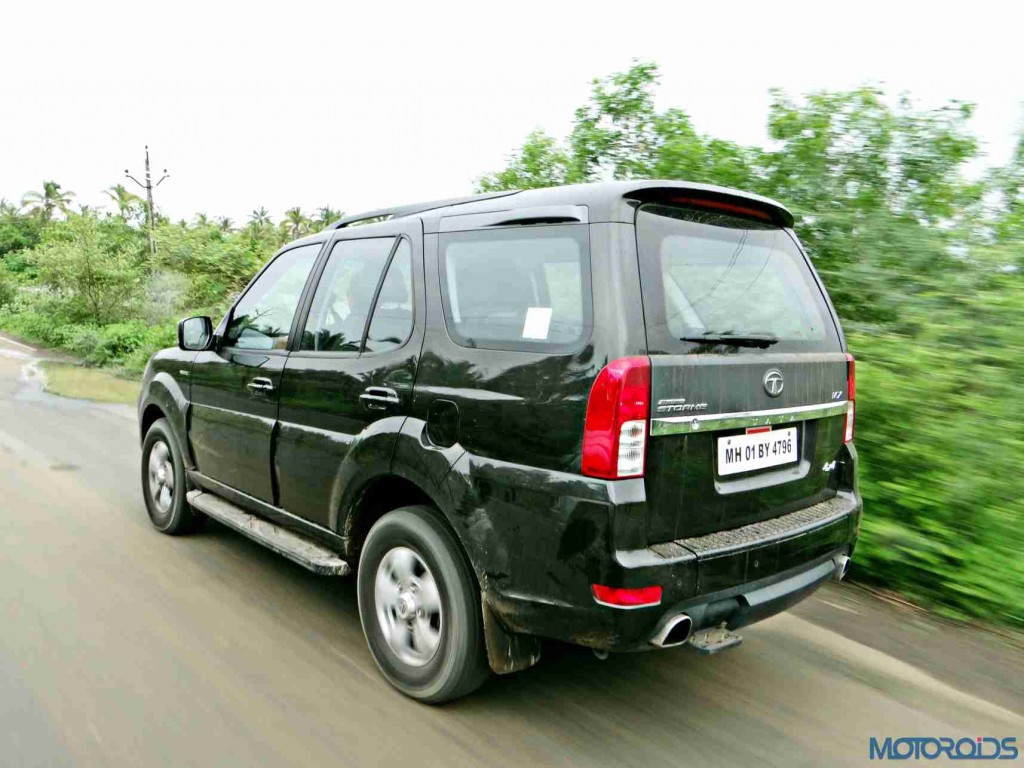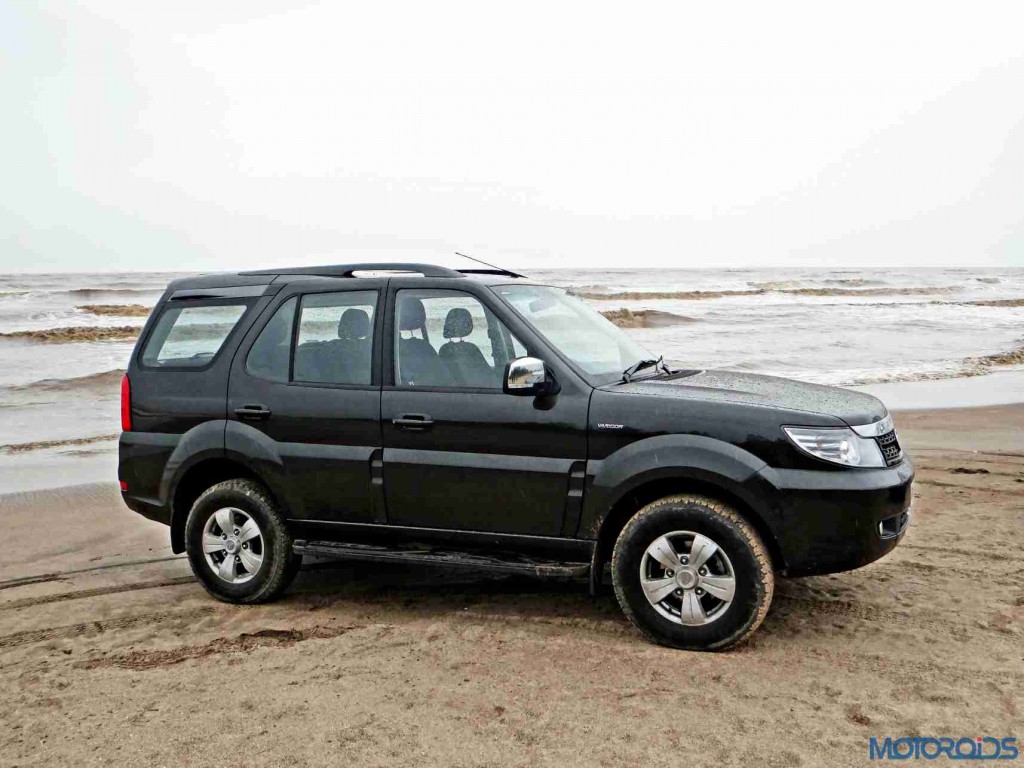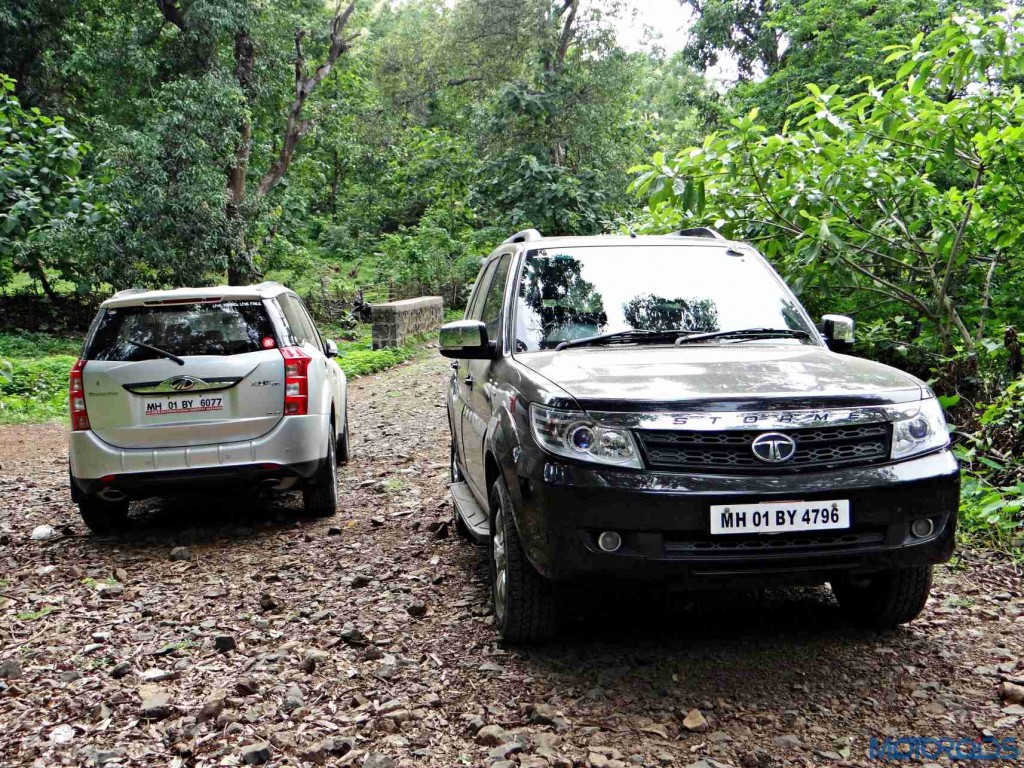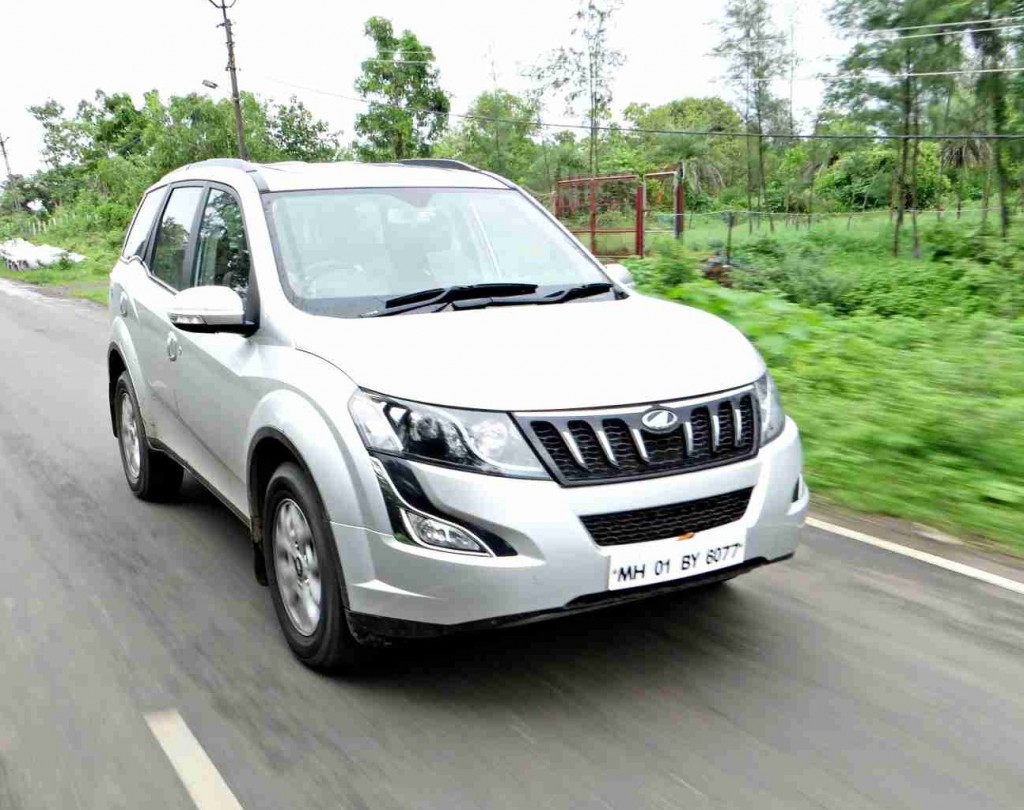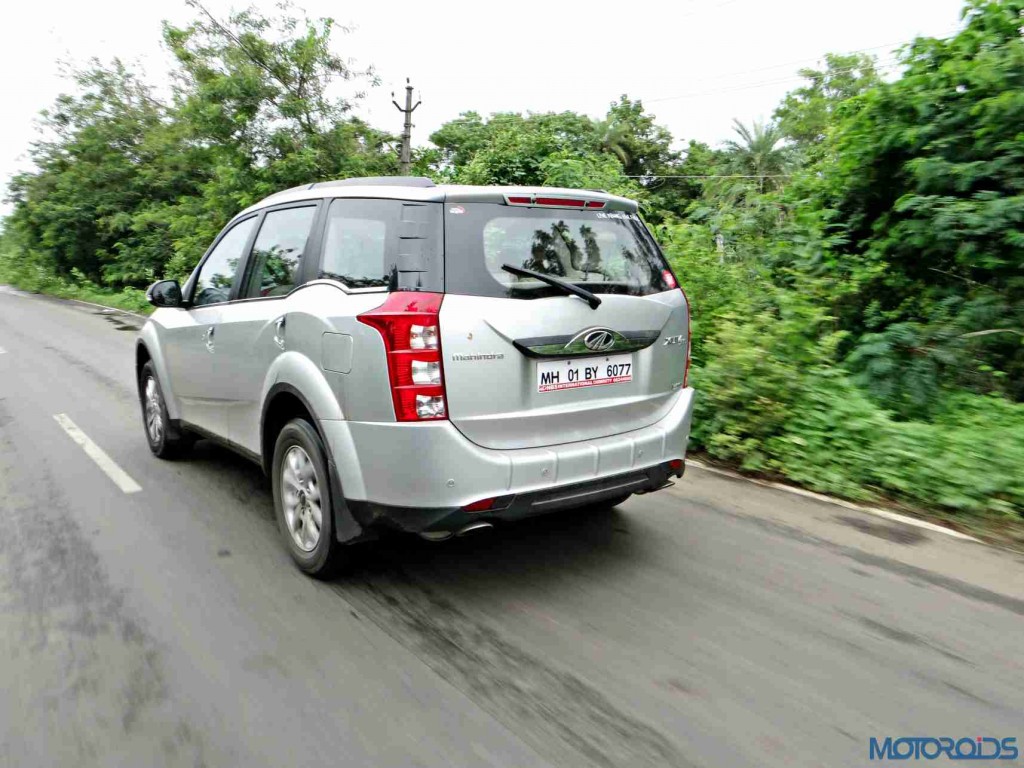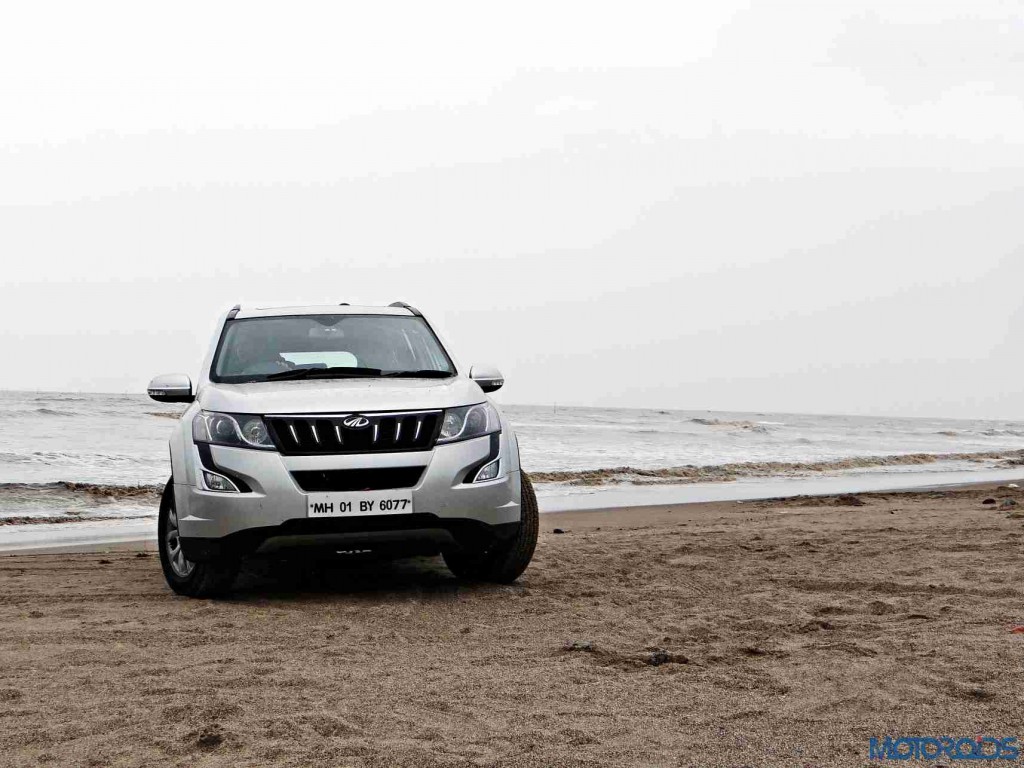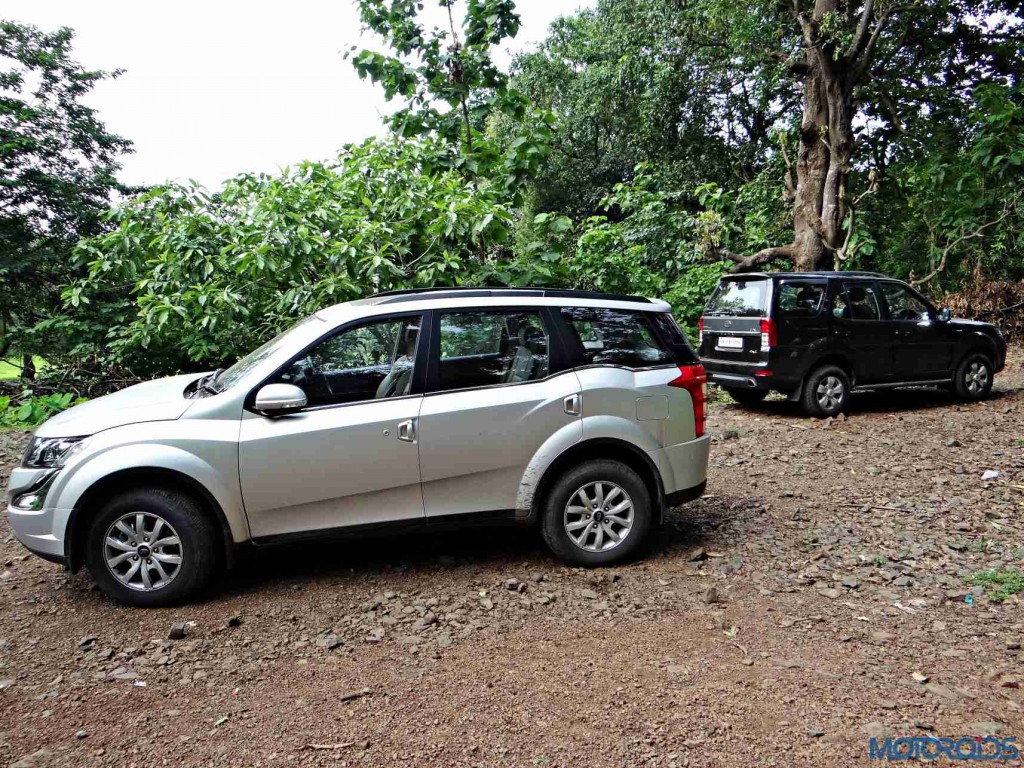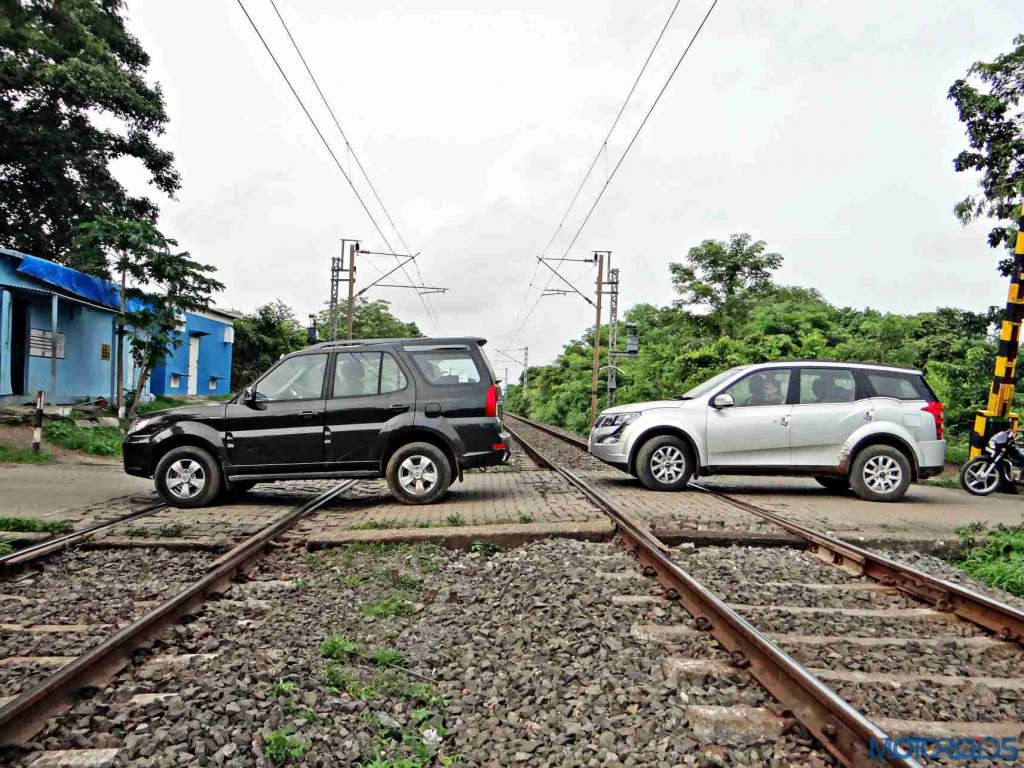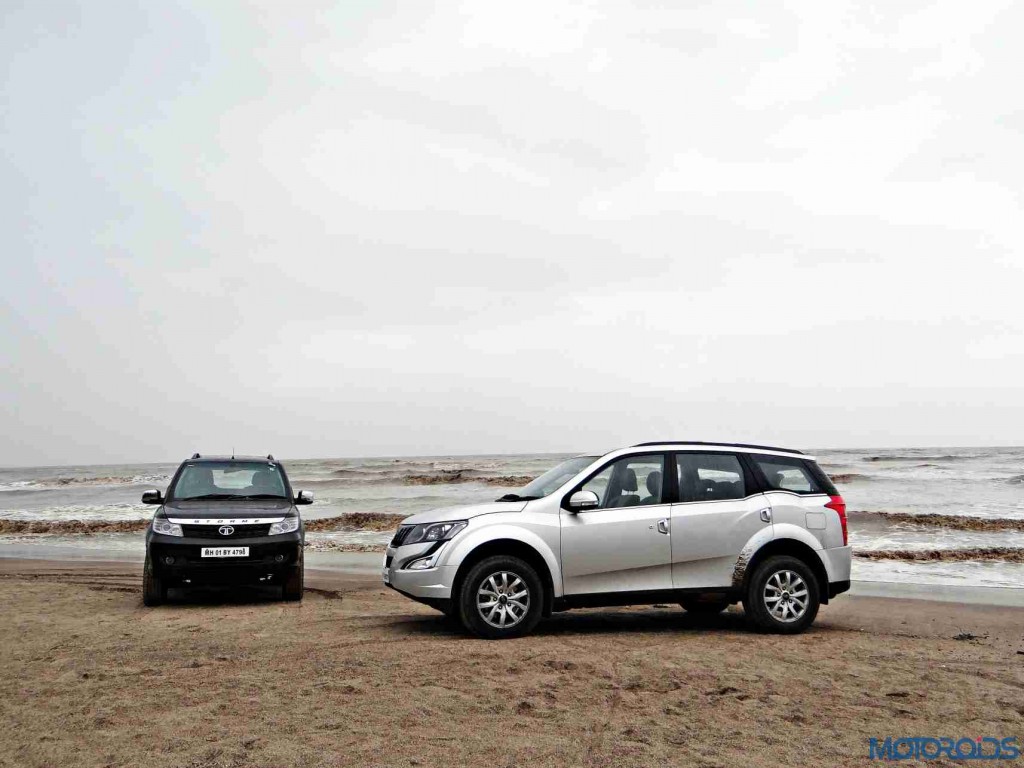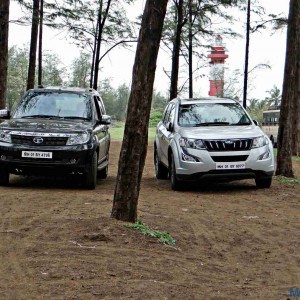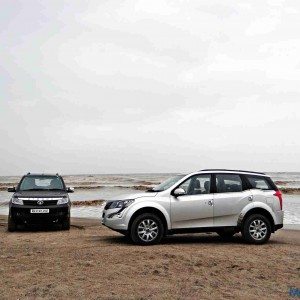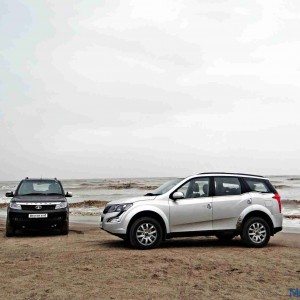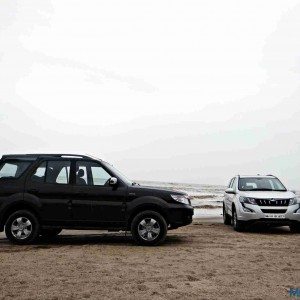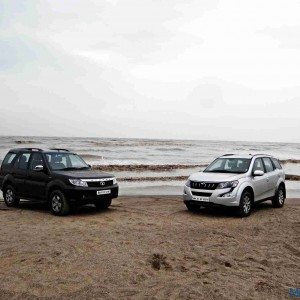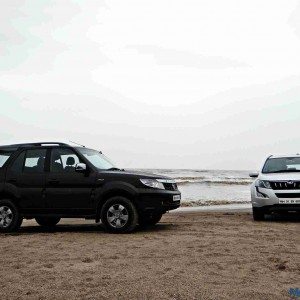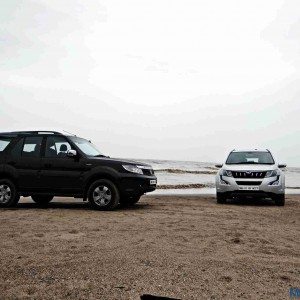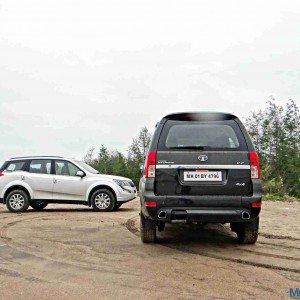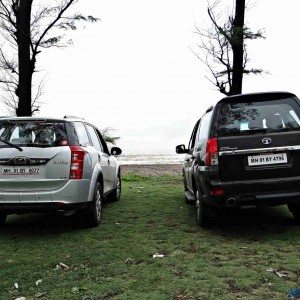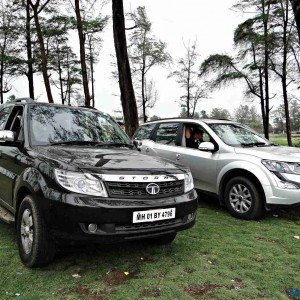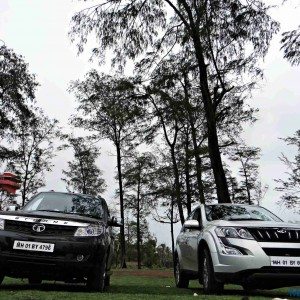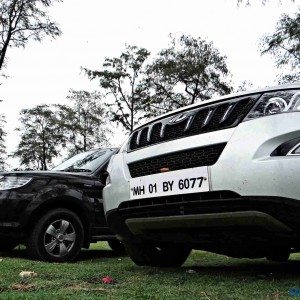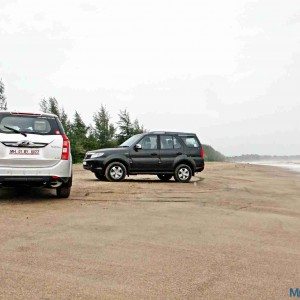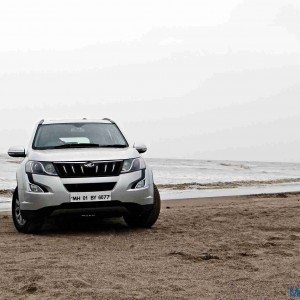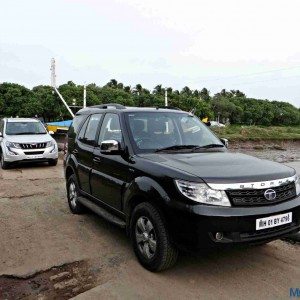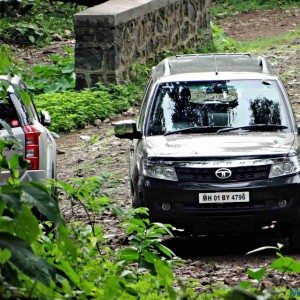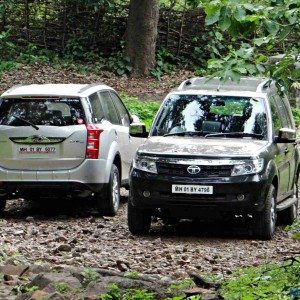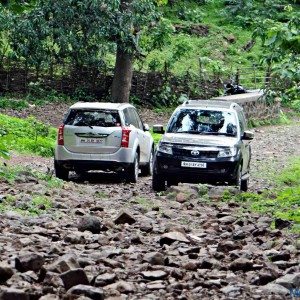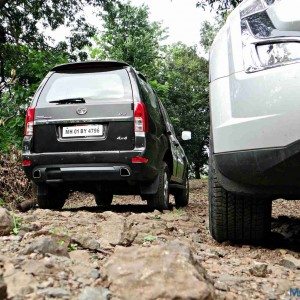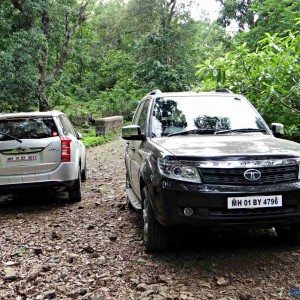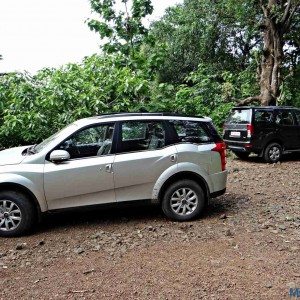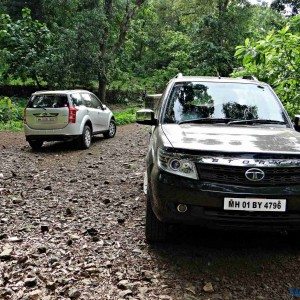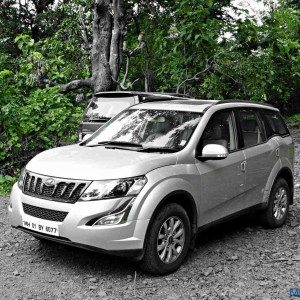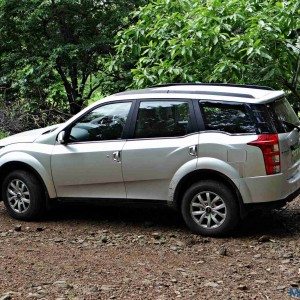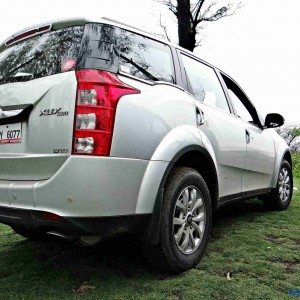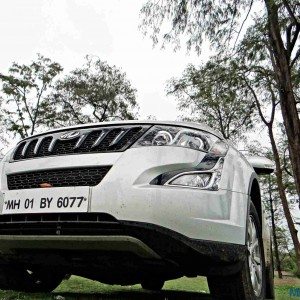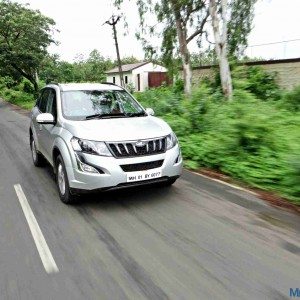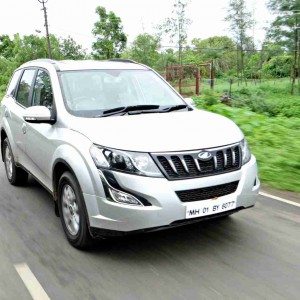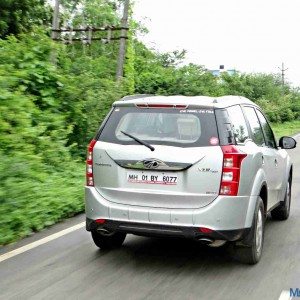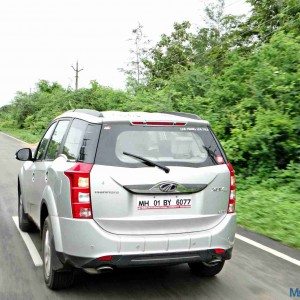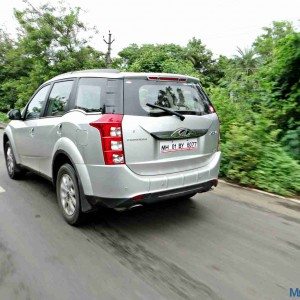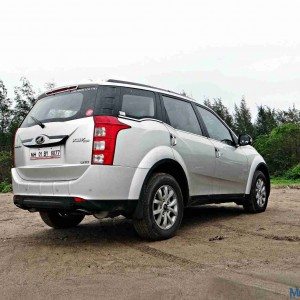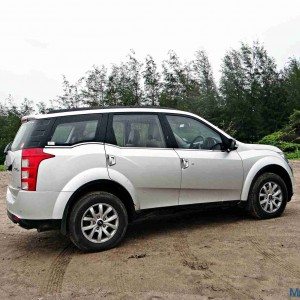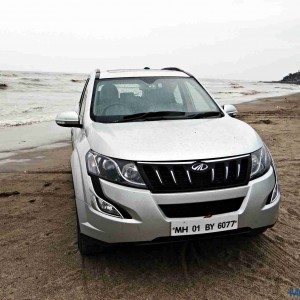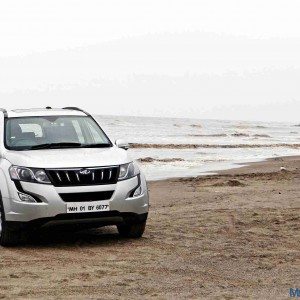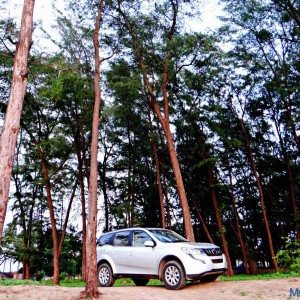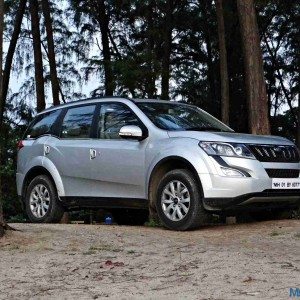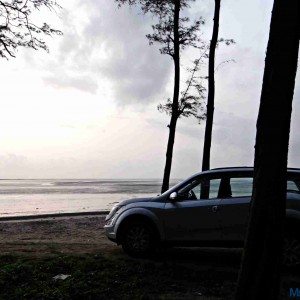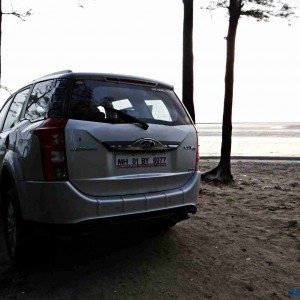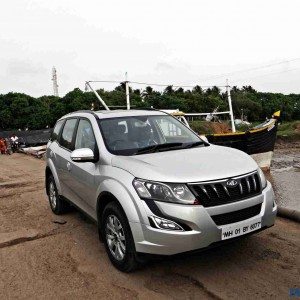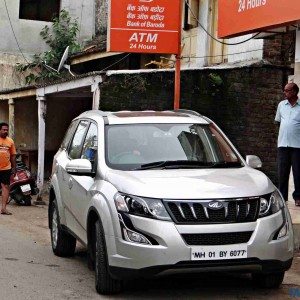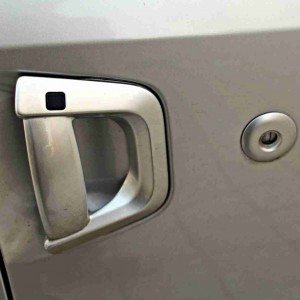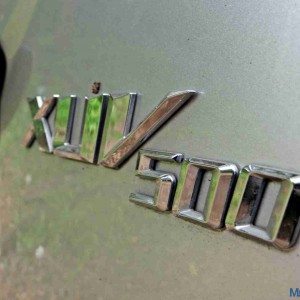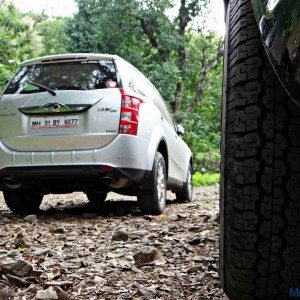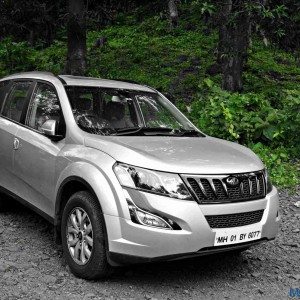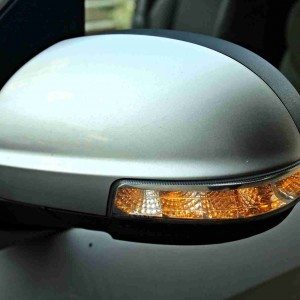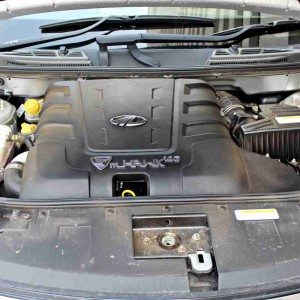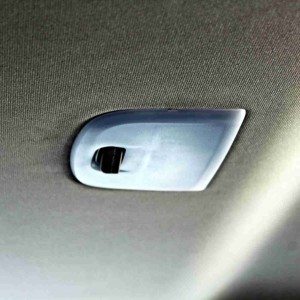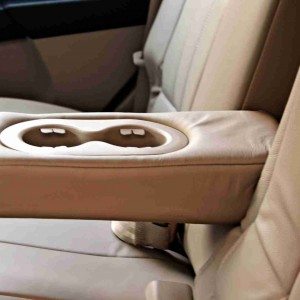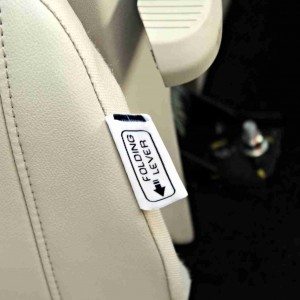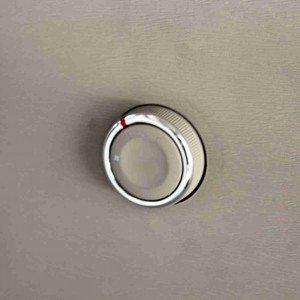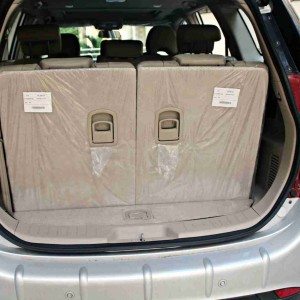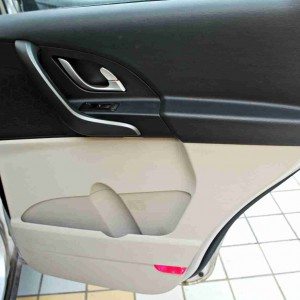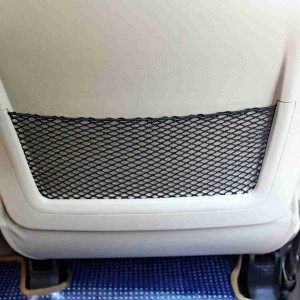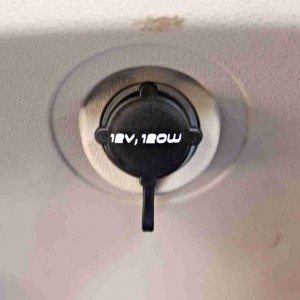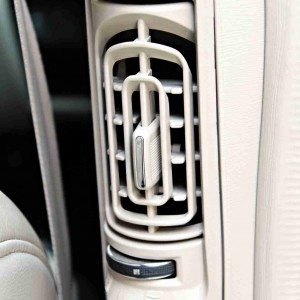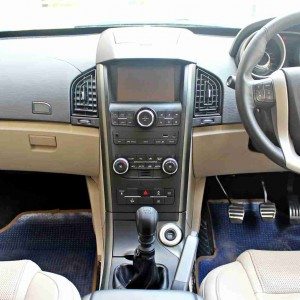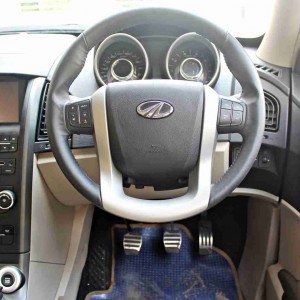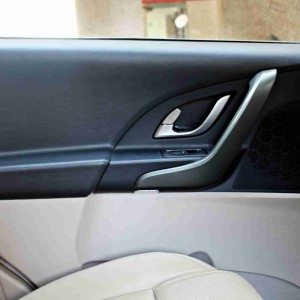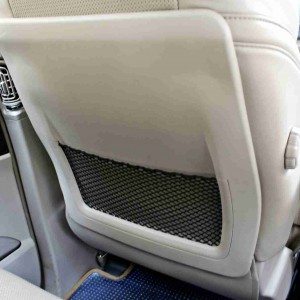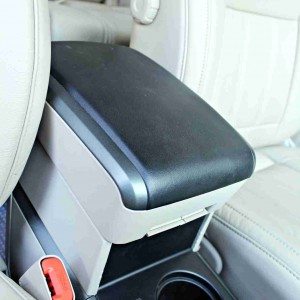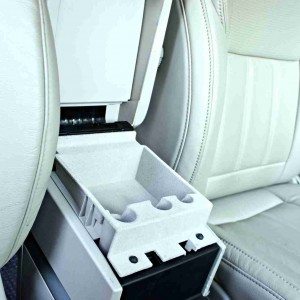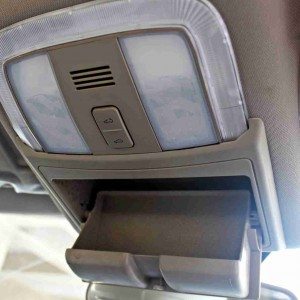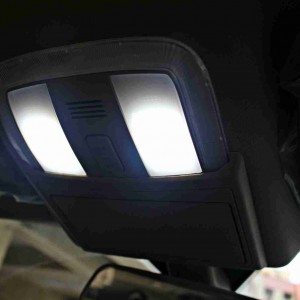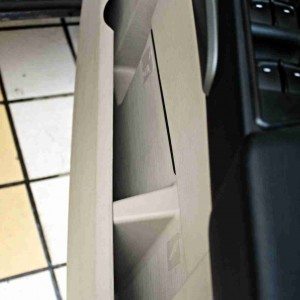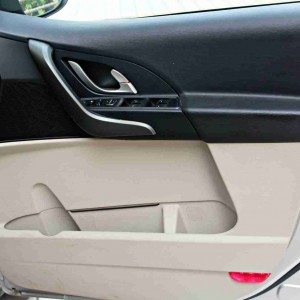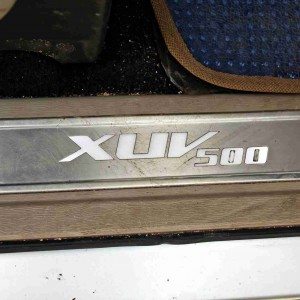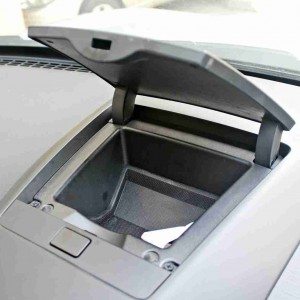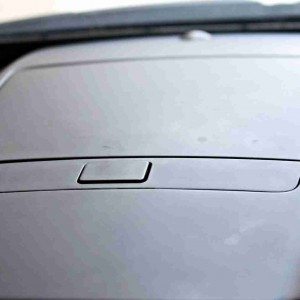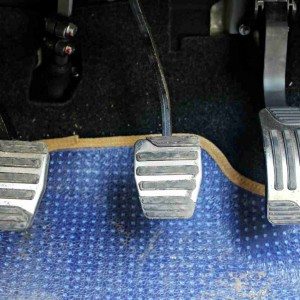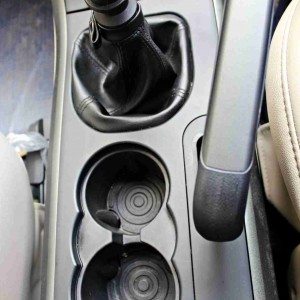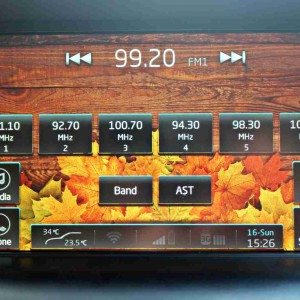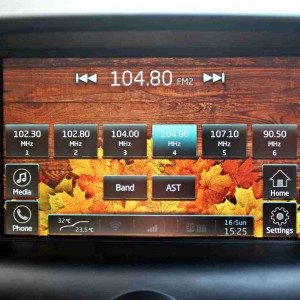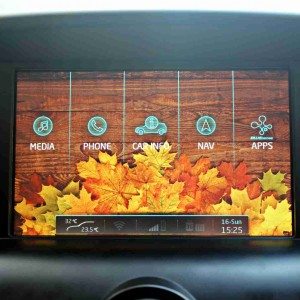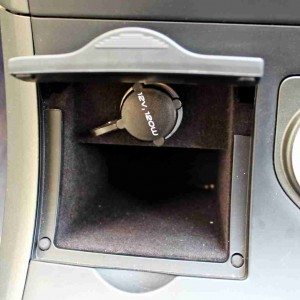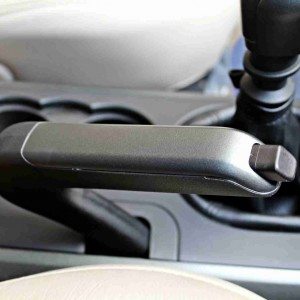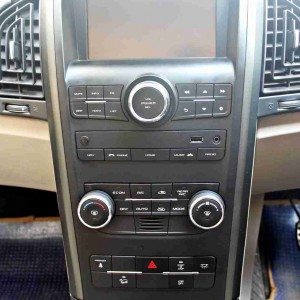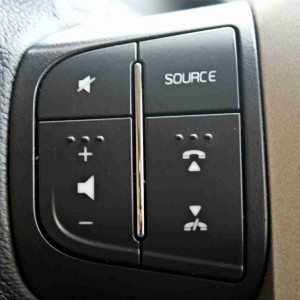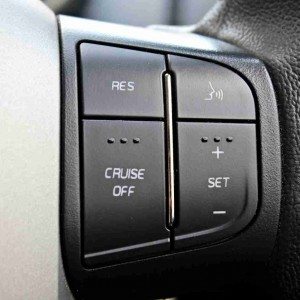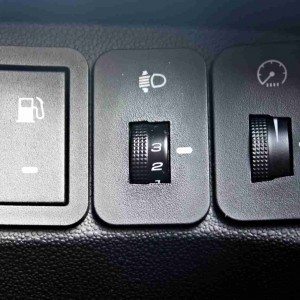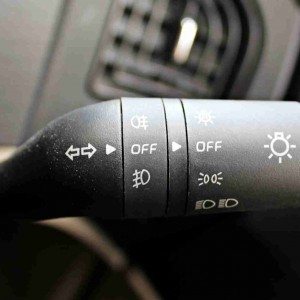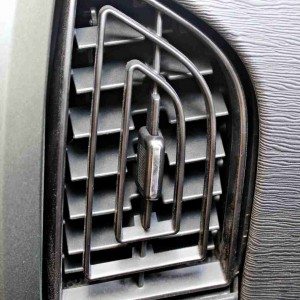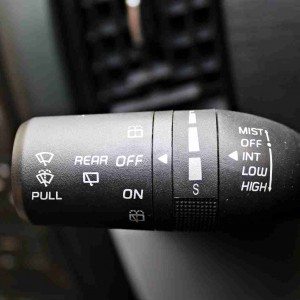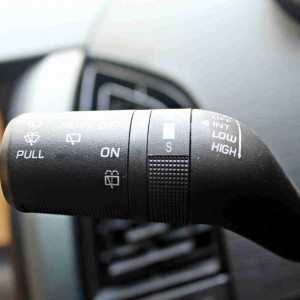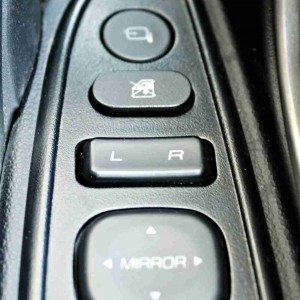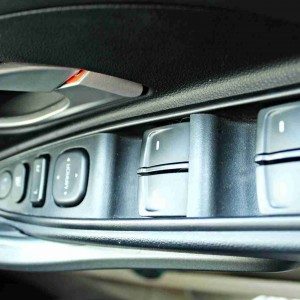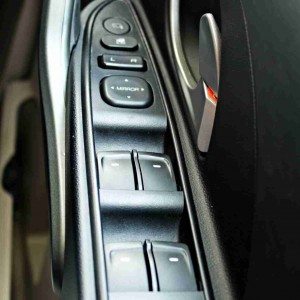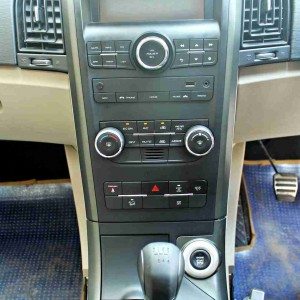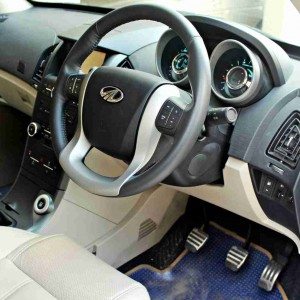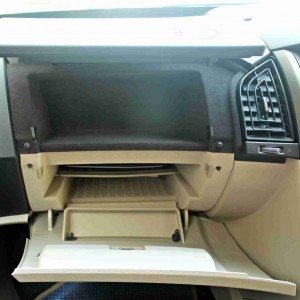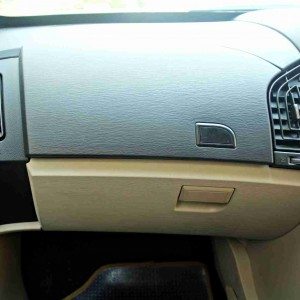We pit the two Indian, large 7-seater, thoroughbred SUVs to the test. On one hand, we have the newly updated Mahindra XUV500, while on the other we have the Tata Safari Storme, which also received mild updates a few months ago.
Exteriors
The Tata Safari has been around for a while now, and whatever mid-life sheen it had gathered courtesy of those tasteful advertisements by Ogilvy & Mather, has started to wear off. The Storme, and its subsequent refresh, could probably have been a bit more exhaustive in our humble opinion. Having said that, this decades old beats still has an allure and connects with the machismo seeking males like no other with its classic lines.
For a design that came out in 1999, its inherent handsomeness still appeals to contemporary taste buds. The old-school appearance makes for a rebellious fervor, something that stands out amidst a sea of crossovers which, when shown a 60-degree incline, will curl up and die.
On the outside, the Storme face-lift (2015) adds a Land Rover inspired honeycomb-patterned front grille. Elements from the new grille find their way inside the air dam as well. Moving over to the sides and rear, nothing much has changed from the original Storme, or the original Safari for that matter. The body cladding has matured and integrates itself better with the bodywork, while rear end has been cleaned up, and unlike the pre-Storme Safari, the external, tail gate mounted spare wheel has moved below.
Compared to the Tata, the new Mahindra XUV500 is fresh meat. While the Safari is relatively tall, the XUV500 has got a squatter stance, and definitely looks faster than the Tata even while standing still. The proportions of the Mahindra are very well balanced, and though we don’t buy the cheetah references, it does look like it’s ready to pounce, and is in a perpetual “full-attack” mode. Sure there are those unsophisticated lines on the surface, but we guess the overall design has gone down rather well with the Indians.
The face-lift adds new static bending projector headlamps with S-shaped LED light guides, a new, evolutionary “toothy” grille with chrome inserts and new chromed fog lamp bezels on a freshly styled front bumper. The bonnet design is cleaner too, and it’s hydraulically assisted for easier opening.
The sides are highlighted by new, 17 inch, 10-spoke alloy wheels and chrome lining below the windows, while the rear gets a new chrome appliqué over the registration plate recess. A new top-end W10 variant with all the bells and whistles has also been introduced.
While looks are subjective, we think that the Mahindra XUV500 looks more modern and contemporary overall and should have a bigger appeal to a wide majority. Having said that, the Safari is more classical, more timeless in its design, and for those who like that form, the urbane look of the modern crossovers won’t probably do.
Interiors
The Safari’s side steps come in handy, because this is one vehicle where one has to literally climb up to access the cabin; blame it on the 200mm ground clearance. The high-set driving position makes one feel like a small king, with a commanding view of the road ahead – it doesn’t matter if none exists, though, but more on that later. The front seats are fairly comfortable and supportive, but could have done with a little more bolstering. Also, there are no powered adjustments here. Furthermore, there’s no leather upholstery, even on the top-end VX 4×4 variant.
The Safari’s legendary second row comfort isn’t a myth, and is aided by a cavernous cabin and a sublime ride quality; we’ll address the latter in a while. While rear seat comfort is brilliant, better bolstering would have sealed the deal. The third row has a couple of jump seats, which are good for only transporting people you don’t particularly like. Even the Safari’s tall height doesn’t provide proper headroom in the third row – a properly engineered bench seat for this row would have backed up its 7-seater claims more strongly.
The dashboard design is carried over from the previous Storme, but gets new dull silver inserts, which lazily attempt to make the interiors look more up market, and it somewhat works alongside the java black color scheme. Then you go looking for a screen to touch on the center console, and there isn’t one – instead, what you find is a 2-DIN music system, which isn’t really the order of the day. Thankfully, the integrated sound system features Bluetooth connectivity and Aux/USB support; it sounds decent too.
Before we mention the lack of climate control, we’d like to mention that the AC chills the huge innards really well, which can be attributed to the roof mounted vents in the second row. But yes, climate control should have been around, especially if one is parting with the thick end of INR 14 lakh; along with a touch screen, electrically adjustable seats and leather.
In cabin storage is decent, with a fairly large glove box and deep door pockets. The new three spoke steering wheel also gets dull silver inserts, and feels nice to hold. The Safari has its own set of features to boast of though; one gets power windows all around, electric mirrors, reverse parking sensors, and an inertia switch, which cuts off fuel supply to the engine, unlocks all the doors and switch on the hazard lights in case of an emergency.
Step inside the Mahindra XUV500 and it feels like a downtown resto bar in comparison to the Tata; especially after night falls. One is welcomed by icy blue “lounge lighting”; with just the right amount of blueness accentuating the interior’s new beige coloration. The smell and feel of leather feels nicer over the Safari’s fabric seats.
The seating position is quite low-set compared to the Tata, as the Mahindra stands shorter. The window lines run much higher, while the heavily bolstered, supremely comfortable front seats wrap the occupants snug. And yes, they’re draped in leather, apart from the driver’s throne being 8-way, electrically adjustable. The second row is great too, with adequate leg and headroom, along with good bolstering. Unlike the Safari, the XUV500’s third row gets a proper bench seat, replete with adjustable headrests and individual AC vents. The Mahindra’s swooping roof-line affects headroom, yet two people can fit in for short to medium distances, and they won’t grumble much.
The new XUV500’s dashboard also benefits from new dual tone (black + beige) coloration; while some of the cheesy plastics from the earlier model have been replaced by newer iterations, which bring better quality to the table too. The center console now gets a new 7-inch touch screen infotainment system which also imbibes navigation and a voice command system. The screen also doubles up to display the feed from the reverse camera, along with audio & visual dynamic assistance. Touch sensitivity and sound quality are satisfactory.
Other features include a new electric sunroof with an anti-pinch function, keyless entry, push button engine start, a chilled compartment between the front seats, illuminated scuff plates, curtain air-bags, and a freshly lit instrument cluster; the latter making the Safari’s cluster look rather old. The electric outside mirrors also have a spotlight, which illuminate the ground below with XUV500 lettering.
Performance and handling
The 2015 Tata Safari Storme comes with a 2.2-litre VARICOR turbocharged diesel engine. This engine makes 150 PS at 4000 rpm and 320 Nm between 1700-2700 rpm. The power gets sent via a 5-speed manual gearbox which gets a 260mm self-adjusting clutch.
The Safari needs a key to be inserted into a hole to get it started – the good, old fashioned way. A truck like rumbling follows as the beast wakes up from its slumber. Refinement has improved a lot over earlier versions, and the new Storme does a good job of keeping unwanted noises outside.
A few meters of driving reveal a familiar hardness to the controls; including the steering wheel, brake and the gear shifter. The Safari is yet to shed its characteristics which suit only the well-built; it’s no well oiled machine, this. The steering requires some muscle to turn this thing at crawling speeds, much more than machinery with similar girth, like, say, the Toyota Fortuner. While the gearshift is somewhat vague, clutch action is commendably light, mostly due to the new self-adjusting clutch system.
Power delivery is fairly linear, disguising the lag well, though there isn’t a heady punch to savor here. Low end is raucous, but moderately enthusiastic. Mid-range performance is good, and the Safari moves with a little more forcefulness after it has some amassed some speed. The top-end, however, is very weak. In-gear acceleration is satisfying, but shifting close to 2.5 tons of metal makes the engine sweat a lot. What the Safari revels in is cruising; what it has inherently excelled in, although a higher 6th gear would have helped it cause.
The ride is marvelous, and the Safari hustles through bad roads with great disregard to average potholes. The suspension isn’t the most modern, but very compliant across all speeds.
However, show it a corner and you’re immediately experiencing unwelcome levels of body roll. Steering feel is extremely vague. Actually, let’s not talk about the on-road handling of this behemoth – you’re better off in the XUV500 when the going gets twisty; more on that later. The Safari just becomes an entirely different thing, though, when the road disappears.
The Safari’s 4WD system comes with electronic ‘Shift-On-Fly’ mechanism and a limited slip differential. As the blacktop disappears, put it into 4H the big comes into its own. For more hardcore stuff, there’s a 4L mode, although we didn’t use it too much. We’d be lying if we said if we exploited the Safari’s full off-road potential, but let us tell you – the Tata will eat the Mahindra, and spit it out when the roads disappear. The long overhangs are a bit of a hindrance if you really want to indulge in some hardcore action off the road, though. A ground clearance of 200mm means that you’d be traversing through rock, slush, sand and uneven terrain without breaking a sweat.
The 2015 Tata Safari Storme also comes with a 63 litre fuel tank, compared to the earlier car’s 55 litres. Fuel economy has been improved too, as ARAI rates the new Safari Storme at 14.1 km/l. Take that figure with a pinch of salt, as we barely saw 9 km/l.
The new XUV500 is powered by a 2.2 liter MHawk diesel engine that outputs 140 bhp and 330 Nm of torque. It’s mated to a six speed manual transmission, while both front wheel drive and all wheel drive options are available.
Thumb the starter, and the XUV500 instantly feels friendlier. The controls are lighter and more car-like, which includes the light steering wheel that’s a breeze at low speeds, unlike the Safari’s palm busting wheel.
The gear shifter feels a little botchy, but the super light clutch makes up for it. Performance is great, and there’s a noticeable punch once boost sets in, making it somewhat involving to drive. That said, there’s considerable lag below 1800clicks. In comparison, the Safari’s power delivery is quite linear, but nowhere as punchy. Mid-range is strong, and the lighter XUV500 keeps pulling till the Safari is a speck in its large rear view mirrors.
A 6th gear also makes it a great cruiser, but it is let down by its jittery ride quality on rough sections, which is not a patch on the Safari’s serene ride quality. Bumps are more prominently felt, and the suspension is considerably less complaint. The XUV500 feels much more at home at well paved tar surfaces, though with better handling and substantially more poise around corners.
Under the skin, Mahindra has added its micro-hybrid technology, which lets the new XUV500 return up to 16 km/l (ARAI certified). The new Regenerative Braking with Intelligent Energy Management recovers the energy lost in excess braking, and uses it to charge the battery. During acceleration, the battery charging is disengaged to improve vehicle performance – all of that works really well.
The XUV500 takes to corners well. The monocoque shell and the lower center of gravity check excess body roll, which is well controlled for a car of its size. The steering doesn’t have much feel to offer. If steering the Tata around a twisty road is analogous to steering an ocean liner over tumultuous seas, then the XUV feels like a medium sized hatch in comparison.
Off the road though, the XUV500 is considerably less competent than the Safari. It has independent suspension all around, as compared to the Safari’s live rear axle. Besides the version we drove was front wheel driven only, so the XUV is more suited to the asphalt, where it is more involving than the Tata. That said, the Mahindra can also play in the rough, but more hardcore situations demand the Tata’s prowess.
Verdict
To the average 7-seat SUV buyer, the XUV500 is better to look at overall than the Safari Storme. The interiors of the Mahindra are also better and more feature rich than the Tata. The Safari’s second row is marginally more comfortable though, and the cabin is roomier than the XUV’s. When it comes to performance and handling, the Mahindra is definitely the one which is more involving to drive, along with being more refined as well. However, the Safari is in a different league altogether when off-road performance is concerned, with it switchable modes and full-time 4WD. The Tata also trumps the Mahindra when it comes to ride quality.
In the broader scheme of things, the XUV500 has the edge over the Safari in most areas. The Safari, on the other hand has a unique manly image, which cannot be replicated. It’s dated, though, and no amount of refresh can change that fact.
At INR 14.35 lakhs for the top end VX 4×4, the Safari offers a cavernous cabin, great ride, and genuine 4×4 capability – along with a macho image. We will, however, have to raise the hand of the XUV500 as the winner of this duel, which, at INR 14.81 lakhs offers more finesse, more features and look more fashionable for a wider audience.

